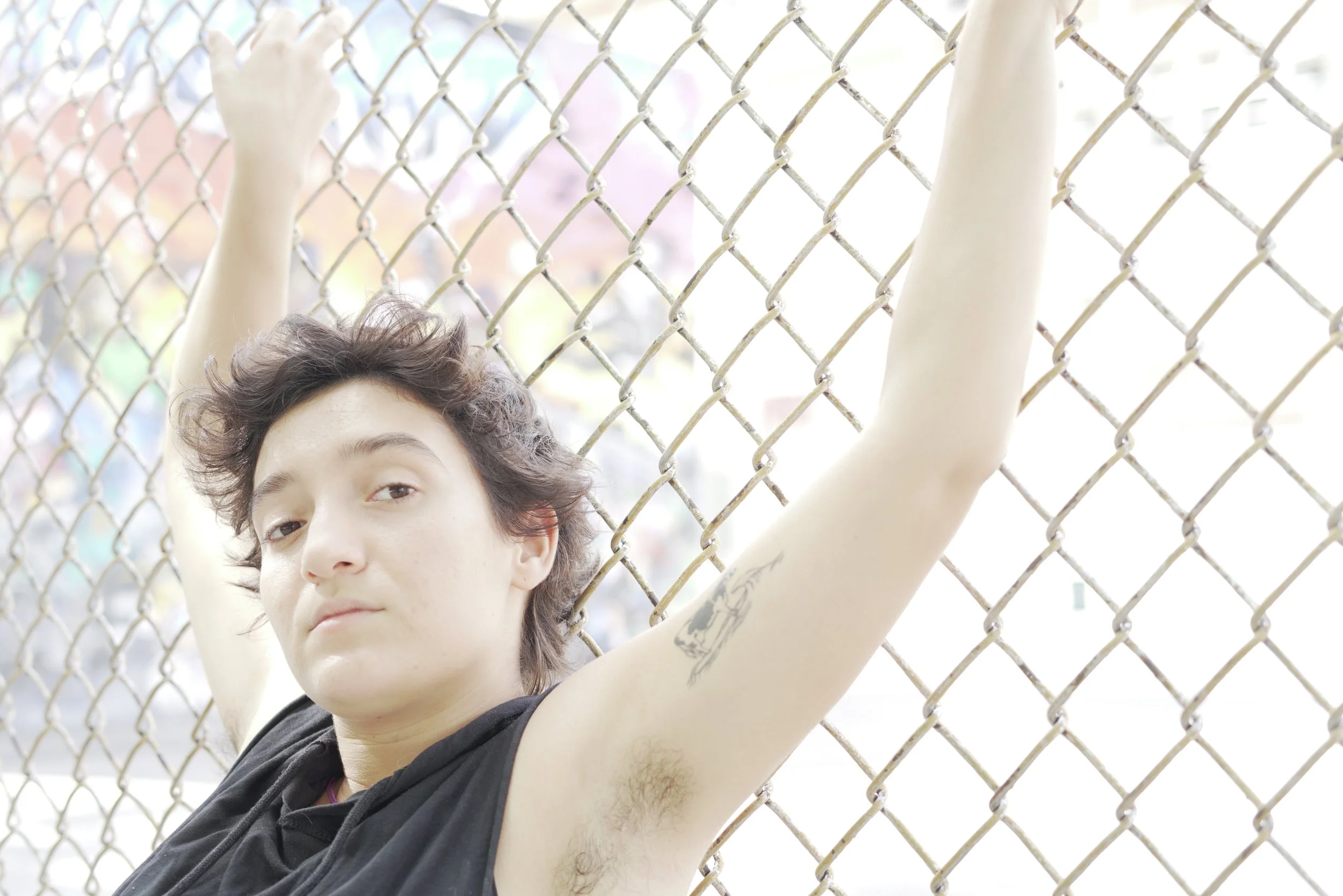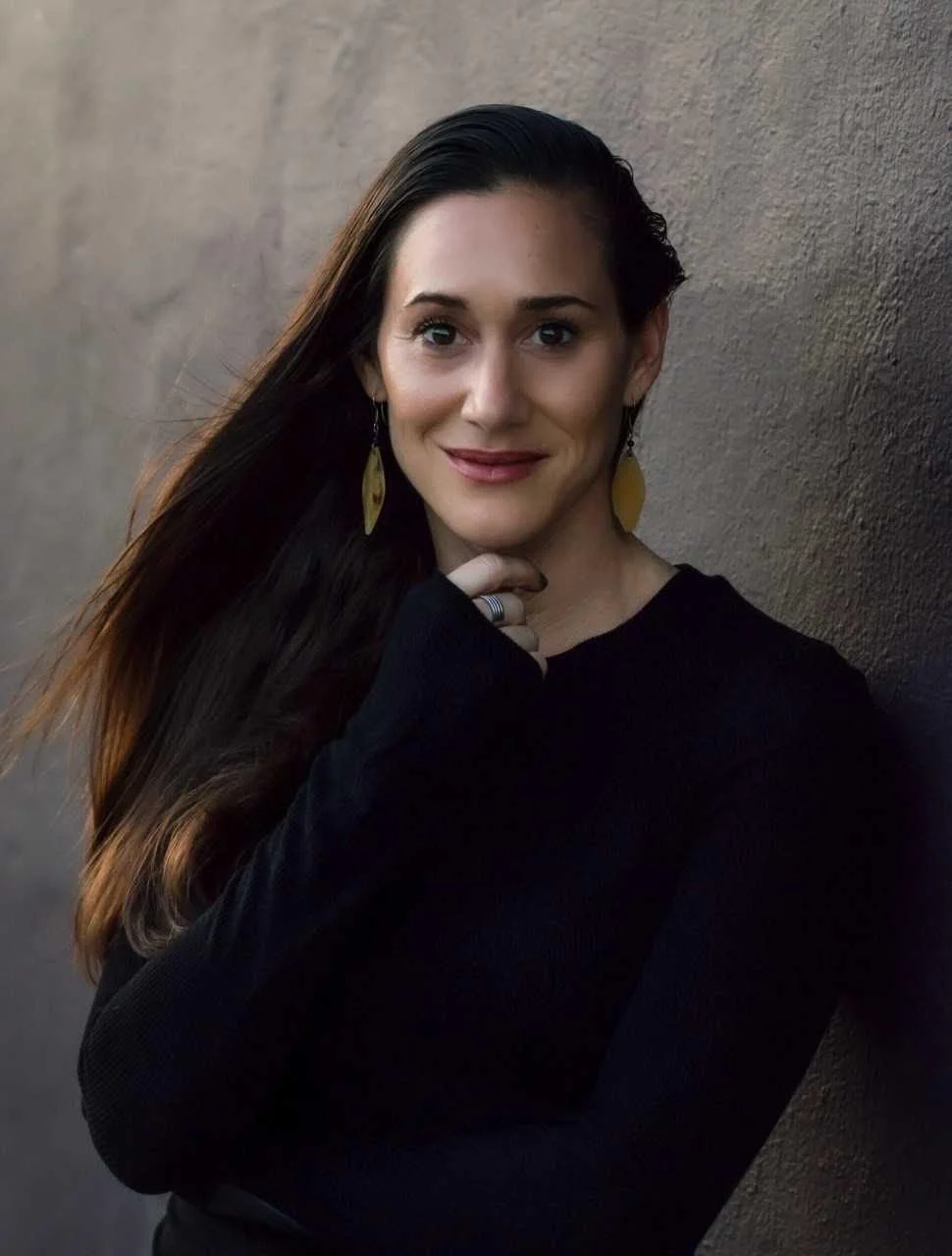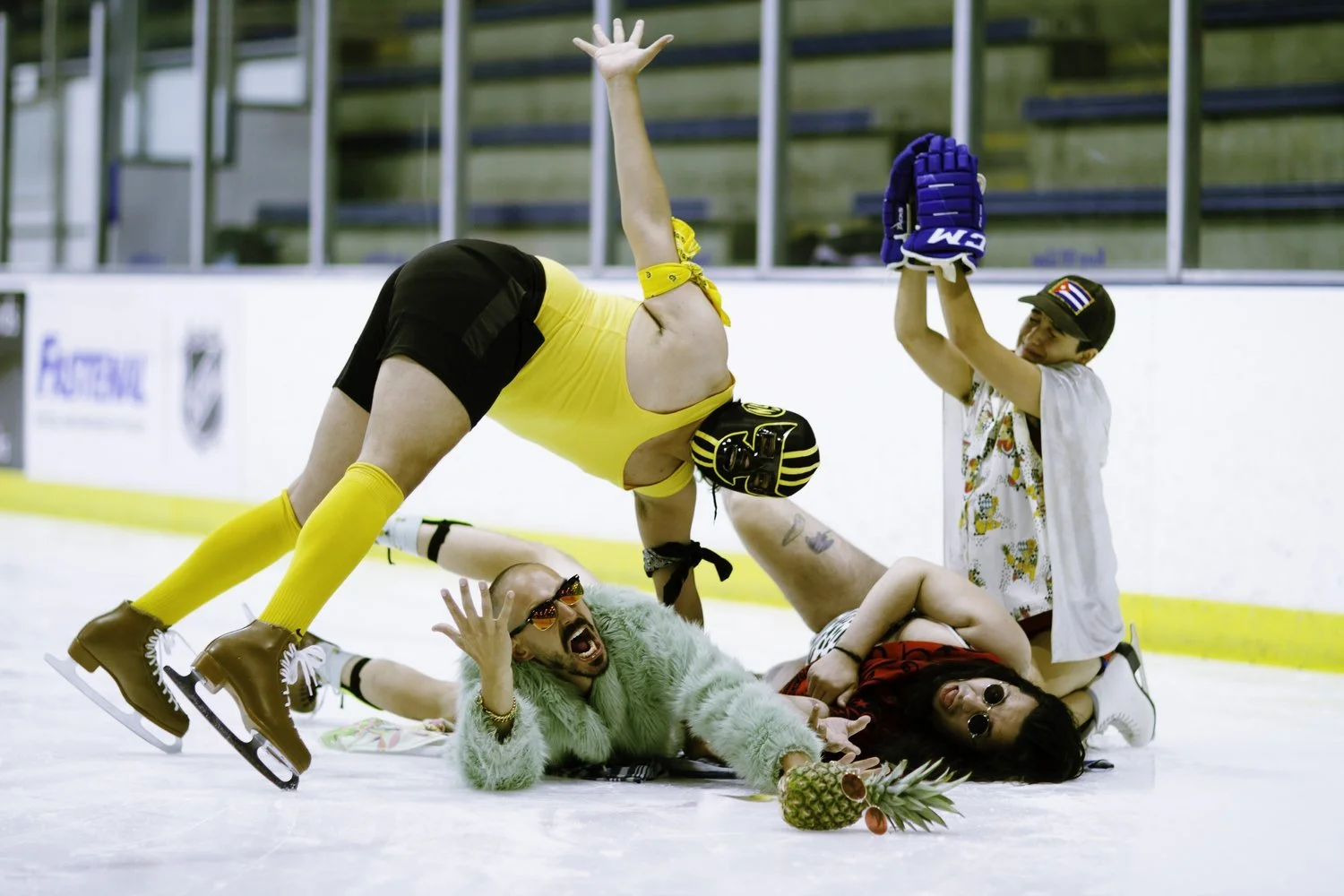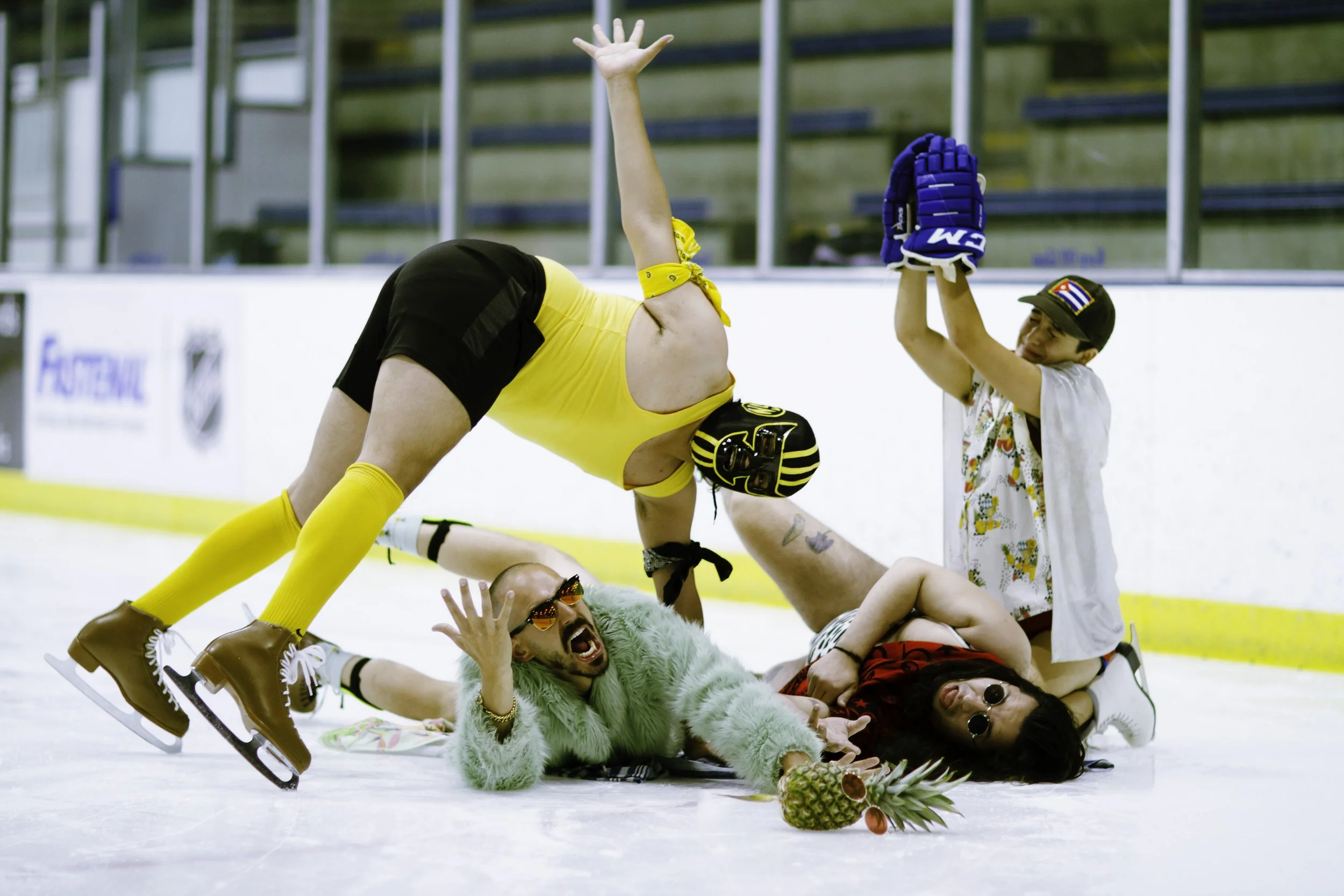An interview with Sabrín Diehl, by Maija García
Is it the slap of the conga and strumming of strings that slip into your hips through the soles of your feet? What better balm than the melodies of Indigenous America, drumbeat of Africa and rhythms of the Caribbean to keep us warm in the winter? For Latin American transplants in the Twin Cities, keeping culture alive – through music, food, language and laughter – is just as essential as a good pair of boots. Theater artist Sabrín Diehl believes sharing our secrets may be good medicine for Minnesotans.
I met Sabrín (they/them) in 2018 when I traded New York City for Minneapolis just in time for winter. A first-year actor in our UMN/Guthrie BFA program, Sabrín had this spark that lit up a room and everyone in it – the way Salsa music lifts the spirit, or spicy black beans and rice hit the spot. After shifting gears and graduating from the BA program, Diehl intended a move to LA, and then to Miami… but a cosmic force kept calling them back to the Twin Cities.
During the deep dark winter of 2020 we sat in my living room, chatting over Cuban coffee about art, culture, and surviving pandemic times in the tundra. Sabrín’s eyes lit up as they began to describe the idea of staging a comedy show on a frozen lake with a bunch of Latiné actors trying to ice skate in swimsuits and sombreros while sipping rum from pineapples and laughing hysterically just to stay warm. (beat) I knew they were on to something.
The next day I introduced Sabrín Diehl to Kate Nordstrum and her powerhouse team at The Great Northern. What a delight to conduct an interview with Sabrín Diehl as The Great Northern Festival launches Latins on Ice!
-Maija G.
Maija García: Sabrín, how do you express yourself as a queer Latinè artist?
Sabrín Diehl: I am always an actor before I am anything else. Being Latinè but also trans and a lesbian, there simply aren’t many roles out there for someone like me. (So) I’ve been pushed to create new pathways. I do stand-up comedy because laughter can cross borders between generations, ethnicities, identities… I write songs in the lonely hours of night to soothe the inner-child in me that never felt seen. I dance – mostly as a form of therapy. I was raised in the hyper-feminine world of ballet, so finding ways in which my trans body moves authentically as an adult has been a beautiful, healing journey.
MG: What are the challenges you face as an artist in the Twin Cities?
SD: I am grateful to the Twin Cities because this is where I officially started my career. It’s a small ‘BIG CITY’ so it feels less intimidating than New York or LA, so you can take up space without worrying too much about what critics will say. There are so many artistic opportunities here just ready to be eaten up! However, Minnesota is one of the most racially inequitable states in the nation. This deeply affects how we bring community together and therefore, how we make art together. Artists like me constantly experience being tokenized here. Sometimes, I feel that I am seen as an identity before I am seen as an artist and that is the greatest offense to me. I am an artist, first and foremost.
MG: What is it about Latin American culture that you are moved to share with the world?
SD: There is a quote from a Mexican philosopher, José Vasconselos, that I think about often, “The red, white, yellow, black… America is home to all of them. In America we are creating a new race, la raza cósmica, the cosmic race.” The beautiful and revolutionary thing about being Latin American culture is that you cannot put us in a box. Most of us have a mixture of the African, Indigenous, and European within us. I feel like a direct product of colonization and the internalized struggle of our history lives within me. I don’t feel comfortable saying that I am white but I’m also not comfortable saying I am Black or Indigenous. I am a mix! Most North Americans don’t know how to refer to us, and it’s because we defy categorization. I think that’s beautiful. That is the future.
MG: Why do we need Latins on Ice?
SD: I am originally from Miami. I have struggled living in Minneapolis a LOT… Because of the unbearable cold, the segregation, the passive-aggressive racism, and the list goes on. But I find the grounding in the reality that so many immigrants are living and often thriving here. Immigrants from all over Latin America, from Africa, Asia – immigrants from all over the world. And I look at these brave people facing this unbearable weather every day and they teach me something about what it means to go on despite feeling like your finger might fall off from frost-bite as you wait for the bus. I admire them. I am forever grateful to the Indigenous communities here, for they taught me to look closer at the magic of the glistening snow that surrounds us for so many months. The gift of presence with where your feet are currently planted. Latins on Ice is my gift back to these communities; to my community. Can we reflect something about the experience of being an immigrant American? How do we hold on to ourselves? These are the questions Minnesota winters have inspired me to ask.
MG: What do you hope the people who come see Latins on Ice will take away from the experience?
SD: I hope that people will feel seen… And if you don’t feel seen, I hope it creates more empathy in your heart for all the people of color who are severely suffering from Vitamin D deficiencies! I hope it creates understanding. I used to think that you didn’t have to understand someone in order to love them but – I think you do. If you love someone who is different from you, you will take some time out of your day to try to understand that person deeper. This allows you to be able to support them, and support is an essential part of love. It always comes back to love.
I believe art creates love channels that can zoom through any dimension. Every time an artist decides to be vulnerable and honest, we create space for those in the audience to feel like they can also be vulnerable and honest – like they can also be human. This way we move towards a more healing, more loving world.
MG: Sabrín, I couldn’t agree more. See you on the ice!

Sabrín Diehl is an interdisciplinary artist. They are an improviser, actor, filmmaker, writer, dancer, and alt-comedian. Most recently, they were honored to act in the collaborative show, “Collidoscope 4.0: Adventures in Pre and Post Colonial America” with directors Talvin Wilks and Ping Chong. They have also acted, danced, and improvised with Guthrie Theater, Mixed Blood Theater, National Theater for Children, Pangea World Theater, Penumbra Theatre, Black Label Movement, Sod House Theater, Open Eye Figure Theater, Theater Coup D’Etat, and HUGE Theater. They have trained with The Margolis Method and the Guthrie Theater. They are a proud graduate of New World School of the Arts (Miami) and a graduate from the University of Minnesota (Twin Cities) with a B.A. in Theater.

Maija García is a Cuban-American director and choreographer whose signature work stands out in Spike Lee’s Oscar award winning BlackkKlansman, Chi-Raq, and Netflix series She’s Gotta Have It, and in the Tony Award winning FELA! on Broadway.
García founded Organic Magnetics to generate urban folklore for the future and spent five years writing, directing and producing historical narratives about New York City’s unsung heroes. Ghosts of Manhattan: 1512-2012, an interactive history premiered in Fort Tryon Park in 2012 as an immersive installation spanning five centuries. I Am NY: Juan Rodriguez premiered at El Museo del Barrio in 2014, imagining the story of New York’s first immigrant.
As a director, García facilitates interdisciplinary collaboration in the creation of new work. García directed Salsa, Mambo, Cha Cha Cha in La Habana, Cuba in 2015; CRANE – on Earth in Sky with Heather Henson, Ty Defoe and Native American artists in support of the movement at Standing Rock in 2016; and a devised performance with military veterans in Stories of Service: An Evening with Veterans at Hill Auditorium in support of Fisher House Michigan in 2017.
García worked alongside Bill T. Jones to choreograph the Tony Award winning musical FELA! On Broadway (2009), and at the National Theater of London (2011), becoming Creative Director of FELA! World Tour (2011), a return to Broadway (2012) and FELA! The Concert (2015), directing productions in the US, Europe, Africa, Australia and New Zealand.
A graduate of California Institute of Integral Studies with a BA in Sustainable Development, García currently serves as Director of Education and Professional Training at the Guthrie Theater where she leads UMN/Guthrie BFA Acting and A Guthrie Experience for MFA actors. A member of the Tony Nominating Committee and SDC (Society of Stage Directors and Choreographers) García is represented by Olivier Sultan, CAA.


